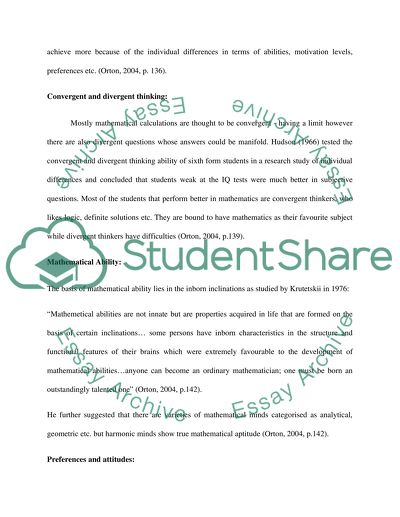Cite this document
(Key Issues in Mathematics Education Essay Example | Topics and Well Written Essays - 2000 words, n.d.)
Key Issues in Mathematics Education Essay Example | Topics and Well Written Essays - 2000 words. Retrieved from https://studentshare.org/education/1567295-why-do-some-pupils-achieve-more-than-others-in-mathematics
Key Issues in Mathematics Education Essay Example | Topics and Well Written Essays - 2000 words. Retrieved from https://studentshare.org/education/1567295-why-do-some-pupils-achieve-more-than-others-in-mathematics
(Key Issues in Mathematics Education Essay Example | Topics and Well Written Essays - 2000 Words)
Key Issues in Mathematics Education Essay Example | Topics and Well Written Essays - 2000 Words. https://studentshare.org/education/1567295-why-do-some-pupils-achieve-more-than-others-in-mathematics.
Key Issues in Mathematics Education Essay Example | Topics and Well Written Essays - 2000 Words. https://studentshare.org/education/1567295-why-do-some-pupils-achieve-more-than-others-in-mathematics.
“Key Issues in Mathematics Education Essay Example | Topics and Well Written Essays - 2000 Words”, n.d. https://studentshare.org/education/1567295-why-do-some-pupils-achieve-more-than-others-in-mathematics.


